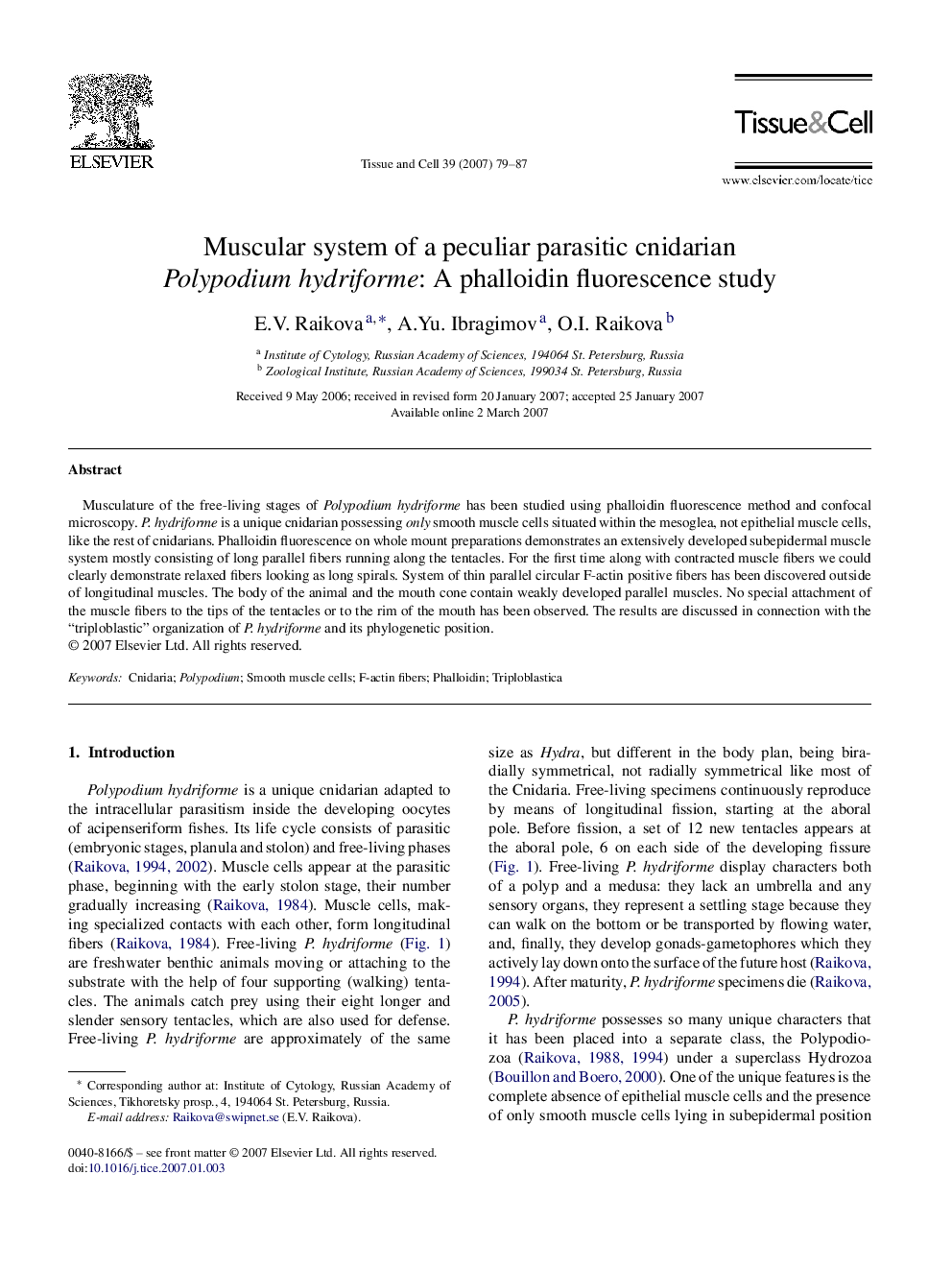| Article ID | Journal | Published Year | Pages | File Type |
|---|---|---|---|---|
| 2204100 | Tissue and Cell | 2007 | 9 Pages |
Musculature of the free-living stages of Polypodium hydriforme has been studied using phalloidin fluorescence method and confocal microscopy. P. hydriforme is a unique cnidarian possessing only smooth muscle cells situated within the mesoglea, not epithelial muscle cells, like the rest of cnidarians. Phalloidin fluorescence on whole mount preparations demonstrates an extensively developed subepidermal muscle system mostly consisting of long parallel fibers running along the tentacles. For the first time along with contracted muscle fibers we could clearly demonstrate relaxed fibers looking as long spirals. System of thin parallel circular F-actin positive fibers has been discovered outside of longitudinal muscles. The body of the animal and the mouth cone contain weakly developed parallel muscles. No special attachment of the muscle fibers to the tips of the tentacles or to the rim of the mouth has been observed. The results are discussed in connection with the “triploblastic” organization of P. hydriforme and its phylogenetic position.
